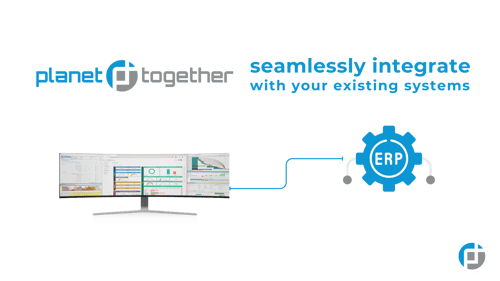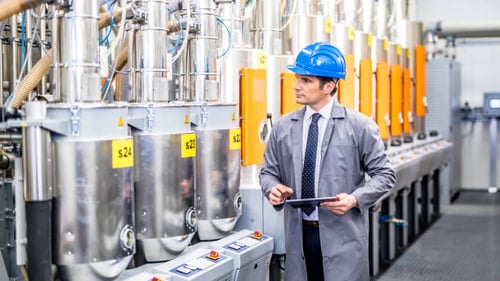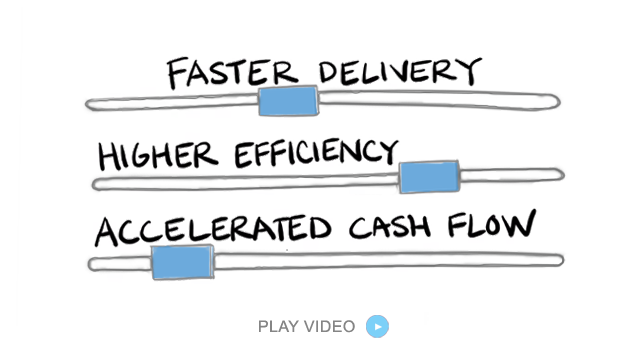Smart Manufacturing IT: Optimizing Resource Usage and Reducing Waste through Integrated Planning in Chemical Manufacturing
In the realm of chemical manufacturing, efficiency isn't just a performance metric—it's a business imperative. From batch processing and continuous production to intricate supply chain logistics, the industry faces constant pressure to deliver high-quality outputs while minimizing operational waste and resource consumption. For Manufacturing IT professionals, the challenge is twofold: enabling real-time visibility and driving optimization across production systems without disrupting workflows or compromising regulatory compliance.
At the heart of this transformation lies the integration of advanced planning and scheduling (APS) tools like PlanetTogether with enterprise systems such as SAP, Oracle, Microsoft Dynamics, Kinaxis, and Aveva. These integrated solutions empower Manufacturing IT teams to not only streamline data flows but also support sustainable manufacturing goals by aligning resource usage with demand patterns and operational capabilities.
This blog explores how Manufacturing IT professionals in chemical manufacturing can lead the charge in resource optimization and waste reduction through digital integration and intelligent planning.
The Resource Challenge in Chemical Manufacturing
Chemical production relies heavily on raw materials, energy, water, and specialized equipment. Even slight inefficiencies can lead to:
Excessive energy consumption
Overproduction or underutilization of inventory
Expensive machine downtime
Regulatory risks from material handling
Environmental non-compliance due to by-product waste
Waste is not only an environmental concern—it translates into lost profits and diminished competitiveness. Manufacturing IT leaders are uniquely positioned to address these challenges by enabling technologies that harmonize planning with execution.

Why Integration Matters: PlanetTogether + ERP/MES Platforms
PlanetTogether APS offers powerful scheduling and optimization capabilities designed for complex, high-variability environments like chemical manufacturing. However, its full potential is unlocked when integrated with enterprise platforms like:
SAP: For real-time inventory visibility and materials traceability
Oracle: For advanced financial forecasting and capacity planning
Microsoft Dynamics: For synchronized data across procurement, production, and sales
Kinaxis: For agile supply chain orchestration and risk modeling
Aveva: For real-time production monitoring and process simulation
This integration bridges the gap between strategic planning and plant-floor execution, creating a feedback loop that helps continuously refine schedules based on actual constraints, resource availability, and demand shifts.

Benefits of Integrated Planning for Resource Optimization
Reducing Raw Material Waste
Through real-time data flow between PlanetTogether and systems like SAP or Oracle, manufacturers can more accurately forecast demand and adjust purchasing volumes accordingly. This avoids overstocking or spoilage of perishable chemicals and solvents.
APS tools also provide optimal batch sequencing to minimize clean-in-place (CIP) cycles, reducing water and cleaning chemical use.
Maximizing Equipment Utilization
By factoring in machine availability, preventive maintenance schedules, and production changeovers, PlanetTogether helps IT teams support operations in achieving maximum asset utilization. Integration with MES systems like Aveva ensures that machine downtime and performance metrics are instantly reflected in the schedule.
This proactive scheduling reduces idle time, lowers energy consumption, and prevents reactive maintenance that often results in wasteful batch discards.
Improved Energy Efficiency
Energy-intensive processes—such as distillation or high-temperature reactions—can be aligned with off-peak energy hours or optimized for sequential runs through schedule adjustments. Integration with ERP and facility management systems allows IT teams to dynamically monitor and balance energy loads.
Manufacturers using Kinaxis alongside PlanetTogether can incorporate external variables such as electricity pricing trends or carbon footprint metrics into their scheduling algorithms for even deeper sustainability alignment.
Optimized Workforce and Shift Planning
Efficient labor deployment is essential for running chemical operations smoothly. With integrated planning, Manufacturing IT can help HR and operations align worker availability with production peaks, avoiding unnecessary overtime or understaffed shifts that lead to errors or downtime.
Moreover, integrated visibility across systems reduces reliance on manual updates, allowing IT to enforce role-based access, data security, and real-time insights for better human resource management.
Minimizing Inventory Carrying Costs
One of the hidden forms of waste is overproduction, which leads to high inventory carrying costs and potential product obsolescence. Through predictive analytics and scheduling simulations, PlanetTogether APS integrated with Microsoft Dynamics or Oracle ERP ensures that only the required volume is produced—at the right time.
This alignment eliminates waste from overstocking while maintaining service levels and avoiding production bottlenecks.

Driving IT-Led Sustainability Initiatives
Manufacturing IT professionals in chemical plants are no longer just support teams—they are catalysts for digital transformation and sustainability. By deploying integrated planning tools, they can lead initiatives such as:
Smart Data Capture: Using IIoT sensors and MES integrations to feed PlanetTogether with real-time production parameters.
Data-Driven KPIs: Automating dashboards to track resource usage, waste volumes, energy efficiency, and carbon impact.
Scenario Modeling: Enabling planners to simulate "green" production strategies that reduce emissions or optimize for water savings.
Continuous Improvement Loops: Leveraging feedback from ERP and production systems to iterate on best practices for lean, low-waste operations.
Implementation Best Practices for Manufacturing IT
To ensure success in optimizing resource usage and reducing waste through integration, Manufacturing IT leaders should consider the following steps:
Conduct a Systems Audit: Map all current digital assets, from ERP and MES systems to existing scheduling tools, identifying integration points.
Collaborate with Operations and Planning Teams: Co-develop integration workflows that reflect the real-world constraints and goals of production and sustainability teams.
Invest in Scalable Infrastructure: Cloud-native or hybrid solutions allow for flexible scaling of integrations and analytics without significant hardware overhead.
Focus on Data Governance: Implement data standardization protocols to ensure consistent metrics across platforms and avoid redundancy or conflicts.
Train for Adoption: Provide workshops and hands-on sessions to help planners, engineers, and operators understand how integrated planning improves outcomes across the board.
In a landscape defined by tightening regulations, volatile raw material prices, and growing environmental awareness, Manufacturing IT professionals are vital to unlocking the next wave of operational efficiency. Through the integration of PlanetTogether APS with ERP and MES platforms like SAP, Oracle, Microsoft, Kinaxis, and Aveva, IT teams can empower their facilities to use resources more wisely, cut down on waste, and thrive in a competitive chemical manufacturing sector.
Ultimately, resource optimization and waste reduction aren't just process improvements—they are strategic differentiators. And Manufacturing IT stands at the forefront of making them happen.
Are you ready to take your manufacturing operations to the next level? Contact us today to learn more about how PlanetTogether can help you achieve your goals and drive success in your industry.
Topics: PlanetTogether Software, Integrating PlanetTogether, Chemical Manufacturing, Maximizing Equipment Utilization, Reducing Raw Material Waste, Improved Energy Efficiency, Optimized Workforce and Shift Planning, Minimizing Inventory Carrying Costs





















LEAVE A COMMENT